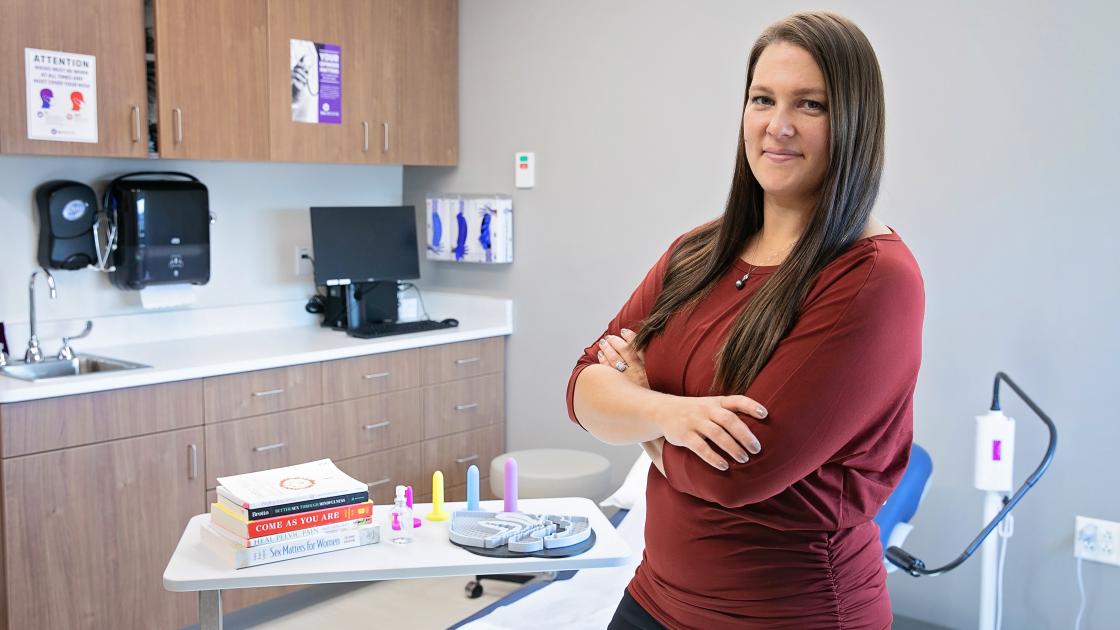
Black History Month Facts
SIU’s Student National Medical Association is showcasing famous African Americans as part of the school’s Black History Month celebration.
Rebecca Lee Crumpler, MD
(1831-1895)
Rebecca Lee Crumpler was the first black woman awarded a medical degree from a U.S. university. Dr. Crumpler graduated from New England Female Medical College in Boston in 1864. She achieved this feat at a time when women, regardless of race, were largely barred from secondary education or higher learning opportunities. She published Book of Medical Discourses in 1883, which drew information from her clinical experiences to help women better care for the health of their families.
https://www.pbs.org/newshour/health/celebrating-rebecca-lee-crumpler-first-african-american-physician
Daniel Hale Williams, MD
(1856-1931)
Dr. Daniel Williams performed the first successful open heart surgery in 1893 and founded Provident Hospital and Training School for Nurses (the first black-owned hospital in America) in 1891. From 1893-1898, he was Surgeon-in-Chief at Freedmen’s Hospital in Washington, DC. He also founded the National Medical Association in 1895 (African Americans were denied membership in the American Medical Association). As a charter member of the American College of Surgeons in 1913, he was its first and only African American member for many years.
Charles Richard Drew, MD
(1904-1950)
Dr. Charles Drew was a pioneering researcher in blood plasma for transfusion and in the development of blood banks. His research in transfusions and techniques for blood storage helped the nation develop large-scale blood banks in early World War II, which allowed medics to save thousands of lives. Dr. Drew was the first director of the American Red Cross Blood Bank, professor at Howard University and chief surgeon at Freedmen's Hospital. He received his M.D. and Master of Surgery (C.M.) degree from McGill University in 1933. During his career, Dr. Drew protested the practice of racial segregation in the donation of blood, as it lacked scientific foundation, and resigned his position with the American Red Cross, which maintained the policy until 1950.
https://guides.mclibrary.duke.edu/blackhistorymonth
Augusta Savage
(1892 – 1962)
Sculptor Augusta Savage was one of the leading artists of the Harlem Renaissance as well as an influential activist and arts educator. While studying at Cooper Union in NYC, she had an experience that would greatly influence her life and work: In 1923, Savage applied to a special summer program to study art in France, but was rejected because of her race. She took the rejection as a call to action, and sent letters to the local media about the program selection committee’s discriminatory practices. Savage’s story made headlines in many newspapers, although it wasn’t enough to change the group's decision. One committee member, Herman MacNeil, regretted the ruling and invited Savage to further hone her craft at his Long Island studio. Savage soon started to make a name for herself as a portrait sculptor. Her works from this time include busts of such prominent African Americans as W.E.B. Du Bois and Marcus Garvey. Savage was considered to be one of the leading artists of the Harlem Renaissance, a preeminent African-American literary and artistic movement of the 1920s and ‘30s.
The Tuskegee Study of Untreated Syphilis in the Negro Male
1932-1972
The infamous Tuskegee study initially involved 600 black men – 399 with syphilis and 201 who did not have the disease. The study was conducted without the benefit of patients’ informed consent. Researchers told the men they were being treated for “bad blood,” a local term used to describe several ailments, including syphilis, anemia and fatigue. In exchange for participating in the study, the men received medical exams, meals and burial insurance. Originally projected to last 6 months, the study was continued for 40 years. The men were never offered adequate medical care for their treatment, even after penicillin became the drug of choice for treating syphilis in 1947.
https://www.cdc.gov/tuskegee/timeline.htm
Kenny Washington
(1918-1971)
One of the first African-American college football stars, Kenny Washington was one of two black athletes to reintegrate the NFL in 1946. Washington was born on August 31, 1918, in Los Angeles. After college, he was passed over by the NFL, which had not had an African-American player since 1933. Instead, he became the biggest star and most popular player in two minor professional leagues on the West Coast. Finally, in 1946, the Los Angeles Rams signed him, ending the 12-year ban on black players in the NFL.
Dr. Vivien Thomas
(1910-1985)
Dr. Vivien Thomas was an African-American surgical research technician who helped develop a procedure to treat blue baby syndrome, now known as cyanotic heart disease. On a pre-med path in 1929, Thomas had to drop out of college when the stock market crashed. He began working with Dr. Alfred Blalock at Vanderbilt University in Nashville in 1930. While at Vanderbilt, Thomas and Blalock researched the causes of hemorrhagic and traumatic shock. Ultimately, their work was used to save thousands of soldiers during World War II. In 1941, he followed Blalock to Johns Hopkins, where Thomas first tested joining the subclavian artery to the pulmonary artery in dogs to increase blood flow to the lungs. Blalock performed the first surgery on a human in 1944, as Thomas stood on a step-stool behind him, coaching Blalock through the procedure. In 1976, Johns Hopkins awarded Thomas an honorary doctorate and named him an instructor of surgery. A 2004 HBO film, Something the Lord Made, chronicled their partnership in medicine. Thomas died in 1985 at the age of 75.
http://reprints.longform.org/something-the-lord-made-mccabe
Mary Eliza Mahoney
(1845-1926)
Mary Eliza Mahoney began work as an untrained nurse at the age of 20. In March of 1878, at age 33, she was accepted into New England Hospital’s graduate nursing program, the first professional nursing program in the US. When she graduated in 1879, she became the country’s first African-American nurse. She worked as a nurse for the next four decades. Throughout her lifetime Mahoney fought for racial and gender equality and the advancement of African-American women interested in nursing. In 1920 she was one of the first women to register to vote when the 19th Amendment passed.
https://www.essence.com/black-history-month-2019/mary-eliza-mahoney-the-first-black-nurse/
Madam C.J. Walker
(1867-1919)
Madam C.J. Walker was born Sarah Breedlove to former slaves, Owen and Minerva Breedlove in Delta, Louisiana on December 23, 1867. In 1905 she moved to Denver and began to manufacture and market her own hair treatment formula called Wonderful Hair Grower. As the business expanded, Walker relocated her operations to Indianapolis, then the largest inland shipping hub in the nation, where she established a factory for her line of beauty products. She also created a chain of beauty parlors in major cities in the United States, South America and the Caribbean. Breedlove also set up a training school for beauticians in Pittsburgh and began to advertise and sell products by mail order. By 1915 Madam C. J. Walker was the wealthiest African-American woman in the nation. During her life she spoke out on the social conditions affecting African-Americans and devoted particular attention and money to the campaign to make lynching a federal crime. She also donated money and time to the NAACP, the National Association of Colored Women, the YMCA and the YWCA. She even provided the largest contribution for saving the home of Frederick Douglass in Washington, DC. On May 25, 1919, Walker died at 51 on her estate Villa Lewaro, in Westchester County, New York.
Jane Cooke Wright, MD
(1919-2013)
Jane Cooke Wright was the daughter of Dr. Louis Wright, one of the first African-American graduates of Harvard Medical School. He set a high standard for his daughters by becoming New York City’s first African-American police surgeon in 1929. He also established the Cancer Research Center at Harlem Hospital. In 1955, Dr. Jane Cooke Wright became an associate professor of surgical research at New York University and director of cancer chemotherapy research at NYU Medical Center and Bellevue and University hospitals. In 1964, President Lyndon Johnson appointed Wright to the President’s Commission on Heart Disease, Cancer and Stroke. A national network of treatment centers was established for these diseases based on the Commission's report she authored. In 1967, she was named professor of surgery, head of the Cancer Chemotherapy Department, and associate dean at New York Medical College, her alma mater. At this time, Dr. Wright was the highest ranked African-American woman at a nationally recognized medical institution.
While pursuing private research at New York Medical College, she implemented a new comprehensive program to study stroke, heart disease and cancer, and created another program to instruct doctors in chemotherapy. In 1971, Dr. Wright became the first woman president of the New York Cancer Society. She retired from cancer research in 1987. During a 40-year career, Dr. Wright published many research papers on cancer chemotherapy and led delegations of cancer researchers to Africa, China, Eastern Europe and the Soviet Union.



